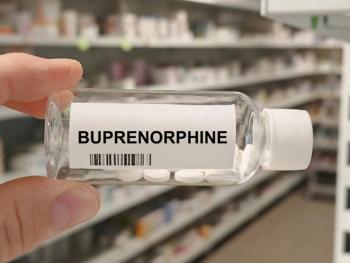Introduction
Over the past decade, pharmacists have been affected by many changes, from smaller updates to legislation to new expectations of the day-to-day responsibilities of the role. Those changes, whether big or small, have all been made possible through advocacy. For example, in the past year, through advocacy efforts, pharmacists in several additional states have achieved provider status, (ie, their recognition as providers), allowing them to bill for services like other health care professionals. Pharmacy students can work in multiple sectors of pharmacy while having support from their professors and professional organizations. Student pharmacists can be a part of meaningful change through their own advocacy and that by health care professionals and patients.
Professional Advocacy
One way pharmacy students can advocate for changes is through legislation at the federal or state level. Legislative advocacy has resulted in many changes, including support for pharmacists as providers and efforts to reform payment for medications, namely through the regulation of pharmacy benefit managers (PBMs). This reform supports pharmacy teams in sustainably providing prescription services to patients. At the same time, their expanded authority through their new provider status advances the patient care services pharmacy teams can offer and be paid for.
Every year in Pennsylvania, pharmacy students attend the Pennsylvania Pharmacists Association’s (PPA) Legislative Day at the state capitol to meet with legislators and advocate for legislation affecting pharmacy practice. In 2024, we advocated for bills that supported PBM transparency to curb community pharmacy closures and expand the authority of pharmacists, pharmacy technicians, and pharmacy interns to immunize children. House Bill 1993, the Pharmacy Audit Integrity and Transparency Act, was passed a few months later, with the final bill including provisions for PBM regulation and expanded immunization authority. For the past 2 years, students from the University of Pittsburgh have also traveled to Washington, DC, to advocate with the American Pharmacists Association (APhA) for passage of the Equitable Community Access to Pharmacist Services Act.1
Students can also advocate without traveling by contacting their legislators through phone, email, or letter-writing campaigns. Students can also join professional organizations or committees that focus on advocacy. For example, the APhA has opportunities for student pharmacists to serve as committee chairs or members-at-large, and specifically in Pennsylvania, students can join the PPA Student Advisory Board.
Patient Advocacy
When we take the oath of a pharmacist, we promise to “consider the welfare of humanity and relief of suffering [to be our] primary concerns” and to “embrace and advocate changes that improve patient care.”2 Our primary goal is to care for patients, and student pharmacists can play a part by improving pharmacy processes and supporting patients in understanding their medications. To support continuous quality improvement, students can complete data collection, drug utilization reviews, or projects that look into trends in medication use or adverse effects.3 Students can work with their pharmacist preceptors to implement new processes and improve safety and efficiency. As some of the most accessible health care professionals, pharmacists provide counseling and improve patient literacy; students can also assist with counseling and helping patients in need.
We interviewed Mira Farah, a third-year student pharmacist at the University of Pittsburgh, who volunteers at the Sheep Inc Health Care Center in the school’s UCARxE program, which helps underserved populations with their medications. When Farah was asked how she takes care of patients and educates them about their medications, she said she goes through a similar process with each.
“I ask them questions about their medications to see if they are still taking them correctly. I ask them what their medications are for,” Farah said. She then assesses whether the patient understands their medications. “I like to have the patient repeat back to me what I told them. This ensures confidence for pharmacists [or] interns that the patient knows what they are doing with their medications.”
Anywhere we work as interns or pharmacists, patient advocacy should always be intertwined with our work. Whether through projects to improve the systems in which we provide patient care or through individual patient interaction, practicing patient advocacy helps us to keep patients at the center of care.
Self-Advocacy
Not only do students have a responsibility to advocate for others, but they also must advocate for themselves. We can advocate for our own professional growth and stand up for what we believe in, whether the setting is work, school, or elsewhere in our lives. Personalizing our paths can involve creating new positions or organizations that fit our interests or working in existing leadership roles.
Both student authors of this article have experience with self-advocacy. Nikol Muslimovic created a lead intern position at one of the hospitals in Pittsburgh. She recognized issues with the communication between management and students, which led to confusion and dissatisfaction. She met with her preceptor and managers to propose a lead intern position. Muslimovic has taken this role and expanded learning opportunities for students by creating a triage shift that allows them to perform medication reconciliations, patient counseling, and interprofessional collaboration. Abby Renae Allenbaugh worked at 2 regional/national community pharmacy chains. In one pharmacy, a large influx of patients needed prescriptions after another nearby pharmacy closed. This caused concerns about patient safety and satisfaction at Allenbaugh’s pharmacy, which did not adjust its staffing although its workload increased. So, Allenbaugh advocated for her pharmacy by hanging a sign explaining that they had gained a large number of patients and were doing their best to help everyone. By doing this, Allenbaugh hoped to improve the experience for the pharmacy team and patients.
About the Authors
Nikol Muslimovic is from Pittsburgh, Pennsylvania, and is a third-year student at the University of Pittsburgh School of Pharmacy in the Pharmacotherapy Scholars Program.
Abby Renae Allenbaugh is from Patton, Pennsylvania. She attended Penn State Altoona for her undergraduate classes and is a second-year pharmacy student at the University of Pittsburgh School of Pharmacy.
Sophia Herbert, PharmD, is an assistant professor at the University of Pittsburgh School of Pharmacy, where she also completed her PharmD and a Community Practice Development and Research Fellowship. She coordinates the Community Leadership and Innovation in Practice Center and serves as the education director for the Pitt Vaccination and Health Connection Hub.
Students can advocate for professional outlets such as clubs at their pharmacy schools. At the University of Pittsburgh, people are empowered to create new student organizations when a gap is identified and students share passion about a topic. Students such as Anneliese Harp, a fourth-year student at the University of Pittsburgh, have joined advisory boards for Phi Lambda Sigma and PPA.
When asked what she has been able to accomplish through her advocacy work, Harp said, “I’ve encouraged students to share their voices and address challenges collectively. Organizing events that tackle critical issues—whether a mayoral proclamation recognizing the efforts of pharmacists or career preparation—has not only inspired others but also strengthened our community.” She also emphasized how important self-advocacy is for students’ advancement. “Self-advocacy is crucial in pharmacy school because it ensures we stay resilient, avoid burnout, and seize opportunities for growth. When we speak up for our needs and lead by example, we empower others to take charge of their journeys and contribute confidently to the profession.”
Conclusion
As student pharmacists, we have the power to influence our ever-changing field through advocacy for the profession, our patients, and ourselves. We can achieve this by promoting new legislation, educating those around us, joining organizations, and much more. Student pharmacists have a voice, and it is our responsibility to work toward a better future both for our patients and the profession.
REFERENCES











































































































































































































